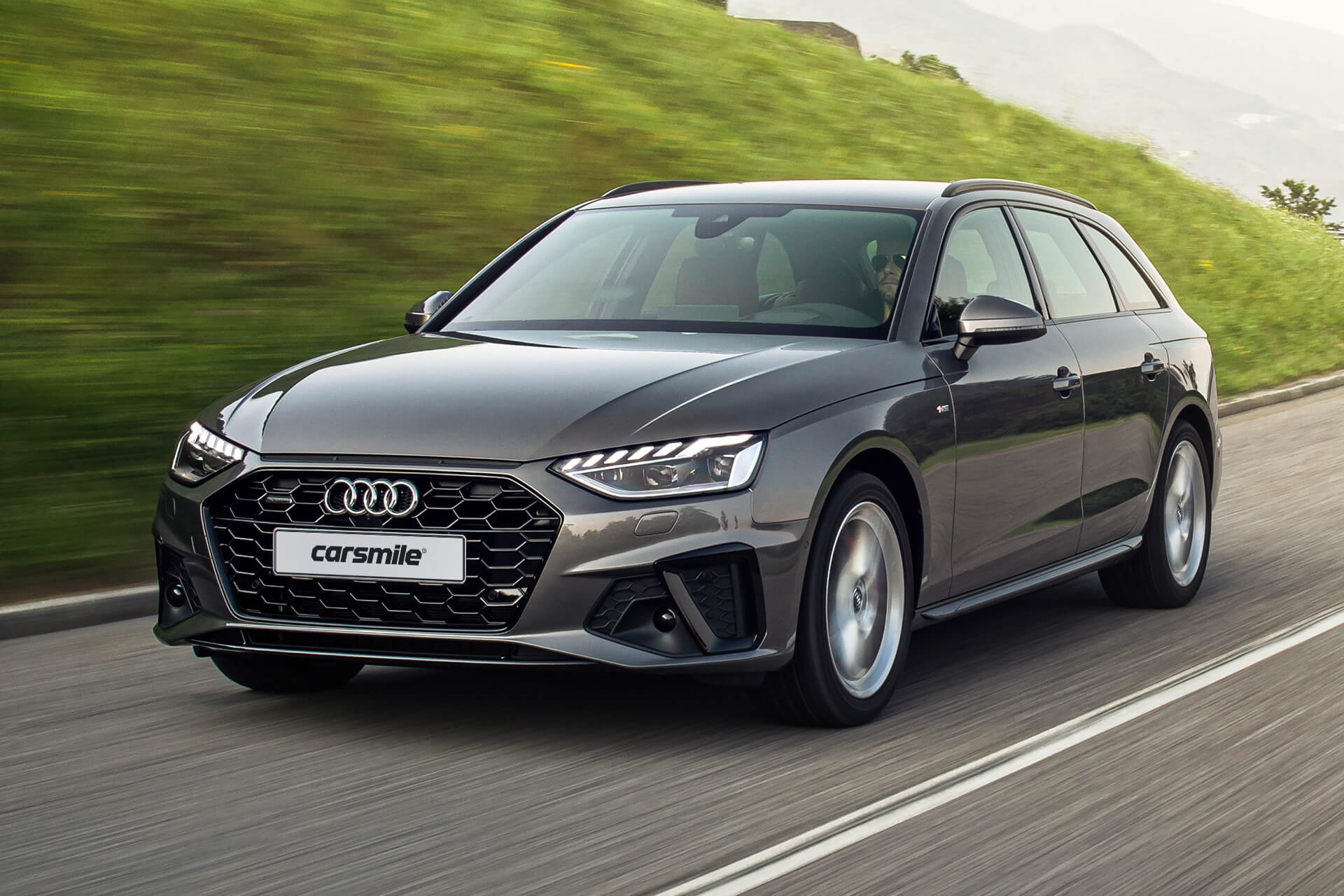Winter can be a car’s worst enemy. While snow-covered roads and freezing temperatures test a vehicle’s performance and traction, there’s another silent threat lurking beneath: rust.
For those who live in regions where salt-laden roads are the norm for half the year, vehicle longevity isn’t just about engine reliability or AWD systems — it’s about corrosion resistance, build quality, and how well a car holds up against months of slush and salt spray.
Some sedans are built like tanks, engineered with smart underbody coatings and rust-proofing measures that let them endure brutal winters without flinching. Others, unfortunately, start showing signs of rot far too soon, even if their powertrains remain solid.
In this article, we’re shining a spotlight on both ends of the spectrum. We’ll start by highlighting five sedans that have earned a reputation for shrugging off snow, ice, and road salt, year after year — vehicles you can trust to survive harsh winters without turning into a pile of oxidized regret.
Sedans That Last in Harsh Winters
Then, we’ll pull no punches with five sedans that have a notorious history of rusting prematurely, costing owners thousands in repairs or lost value.
Whether you’re shopping for a winter warrior or trying to avoid a corrosion-prone clunker, this list will give you a clearer picture of which sedans deserve a spot in your snowy driveway — and which ones should be left on the lot.
1. Subaru Legacy
Standard all-wheel drive, rugged engineering, and extensive use of galvanized steel make the Legacy ideal for snowbelt states.
Winter Advantage: The AWD system grips in snow without drama, and the underbody is well-protected against salt-induced rust. Heated seats and mirrors are standard on many trims, a nice touch for icy mornings.
The midsize sedan category is among the most competitive segments in the automotive market, requiring standout features and performance to rise above the rest.
It’s also a field where brand loyalty runs deep—many buyers stick with a familiar make and model for years, sometimes decades. Subaru’s Legacy has long benefitted from a devoted, albeit somewhat niche, following.
However, despite its reputation and loyal fanbase, it has consistently fallen short in sales compared to dominant players like the Honda Accord and Toyota Camry. In response, Subaru completely redesigned the Legacy for the 2020 model year in an effort to close that gap and appeal to a broader audience.
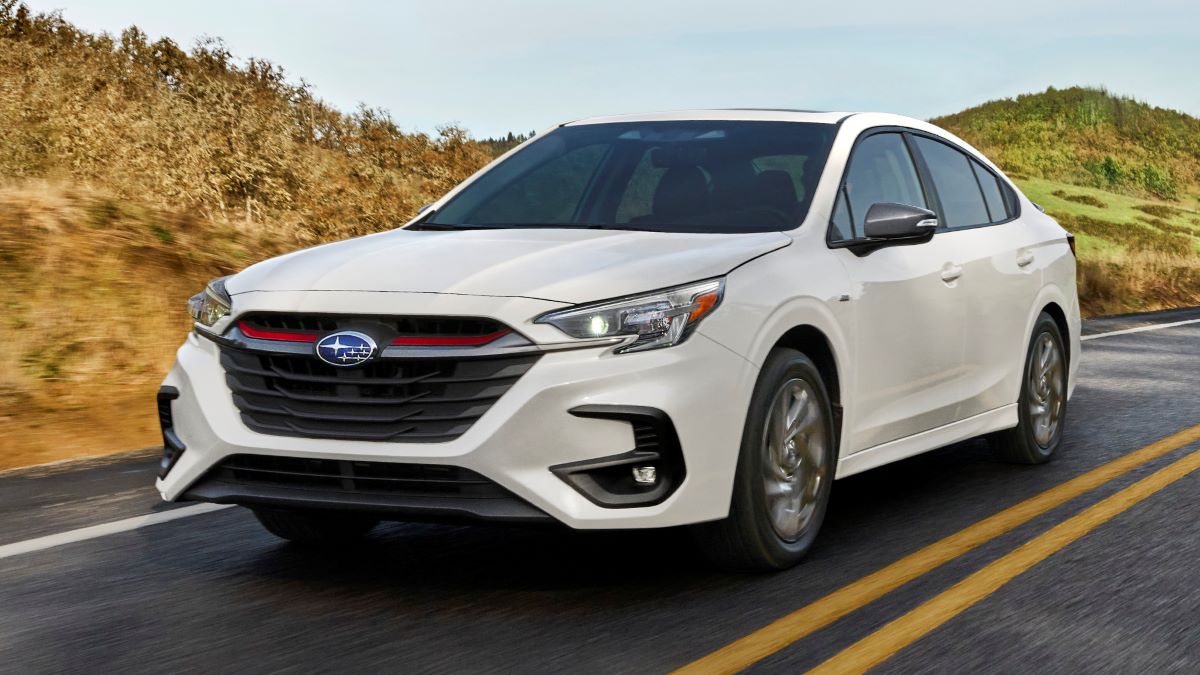
Meeting that challenge is no small feat, but the updated Legacy delivers improved refinement, a generous array of standard safety features, and the continued inclusion of standard all-wheel drive—an advantage in wet and slippery driving conditions.
Inside, the Legacy has been significantly upgraded with a completely new interior, highlighted by an available 11.6-inch touchscreen infotainment system that adds a modern touch.
Powering the new Legacy are two four-cylinder engine options. While the base engine may leave performance enthusiasts wanting more, the new turbocharged 2.4-liter engine—replacing the outgoing six-cylinder—clearly stands out as the enthusiast’s pick. It offers robust acceleration and improved fuel efficiency over its predecessor.
So how does the Legacy compare to its competitors? The class is still led by the polished and upscale Honda Accord. We also have a strong appreciation for the bold styling of the Hyundai Sonata, and for buyers seeking all-wheel drive, the recently redesigned Nissan Altima is worth a look.
Still, it’s time to reconsider any old assumptions about the Legacy. With its upgraded interior, standard all-wheel drive, and an impressive safety tech suite, the 2020 Subaru Legacy emerges as one of the more compelling midsize sedan options available today.
2. Toyota Camry (Post-2012 Models)
Modern Camrys use rust-resistant materials and high-quality paint coatings. The optional all-wheel drive in recent models improves handling on icy roads, while the body panels resist salt spray and oxidation.
Legendary Toyota reliability extends to cold-weather climates. After burdening the previous generation of its best-selling sedan with an underwhelming interior and a lackluster driving experience, Toyota responded with a comprehensive redesign of the Camry last year.
The latest Camry maintains the model’s well-earned reputation for reliability and low ownership costs while introducing a significantly improved interior, bolder styling, and, particularly in the SE trim, a more engaging drive. For 2013, the Toyota Camry receives additional refinement in the form of more standard features and enhanced interior materials, further elevating its appeal.
As with the previous model, the Camry’s powertrain offerings earn praise for their solid balance of performance and fuel efficiency. The four-cylinder engine delivers satisfying acceleration, while the more powerful V6 still manages a respectable 25 mpg in combined driving.
For those focused on fuel savings, the Camry Hybrid remains available and is covered in a separate review. On the road, the Camry offers a comfortable ride and decent handling, though the overall driving experience continues to feel a bit detached and uninspiring.
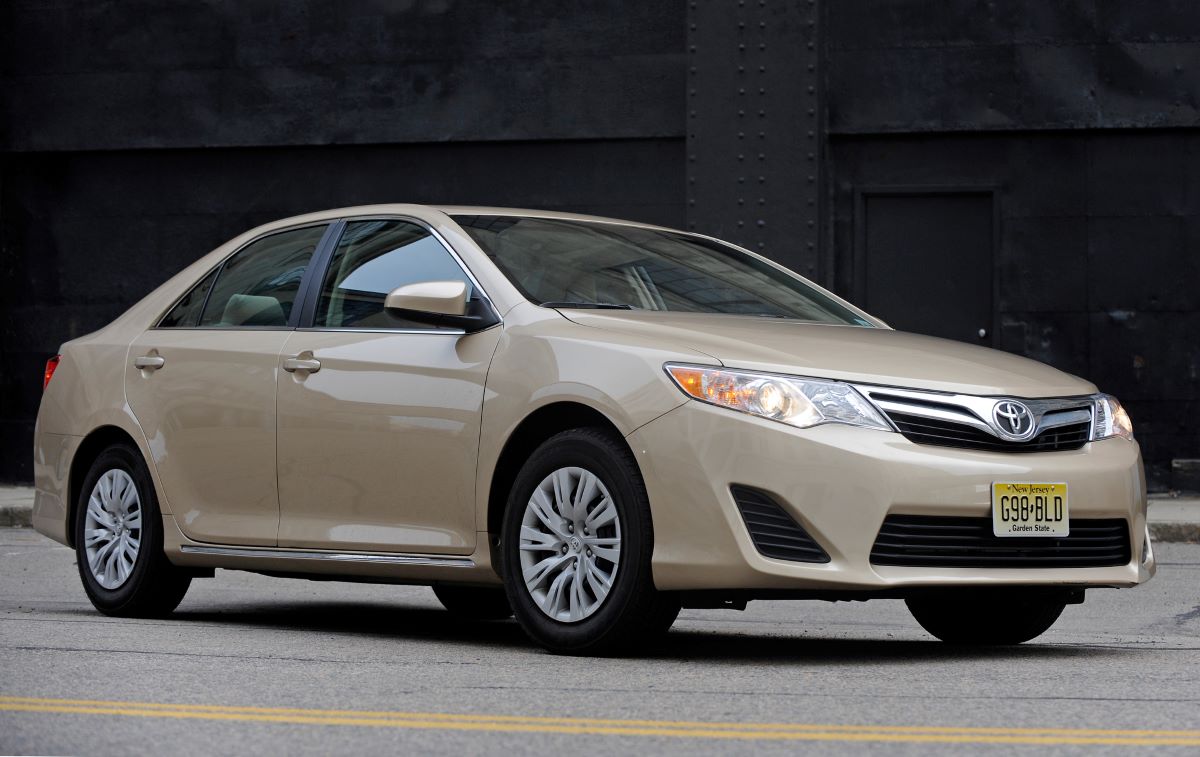
That said, the SE trim introduces sharper handling characteristics that, while not enough to convert the Camry into a full-fledged sport sedan, do offer a more connected and enjoyable feel for those who appreciate a bit more feedback from the wheel.
Of course, the 2013 market offers plenty of other solid midsize sedan options. The Honda Accord and Nissan Altima both continue to blend practicality with slightly sportier driving dynamics. The Hyundai Sonata stands out for its mix of refinement and strong value, while the all-new Ford Fusion impresses with its stylish design and well-rounded performance.
While the 2013 Toyota Camry will undoubtedly satisfy a wide range of buyers, we strongly recommend taking the time to explore all the options. A weekend of back-to-back test drives could go a long way in helping you make the right decision.
When it comes to performance and fuel economy, every 2013 Toyota Camry comes standard with front-wheel drive and a six-speed automatic transmission, paired with one of two engine options.
The base engine is a 2.5-liter four-cylinder producing 178 horsepower and 170 lb-ft of torque. Fuel economy is a strong point, with EPA estimates of 25 mpg city, 35 mpg highway, and 28 mpg combined—placing it among the top performers in the segment.
The available upgrade is a 3.5-liter V6, which delivers 268 horsepower and 248 lb-ft of torque. With this engine, the Camry V6 hits 60 mph in 6.6 seconds, a competitive figure for six-cylinder offerings in this segment. Despite the added power, it maintains solid fuel efficiency, rated at 21 mpg in the city, 31 mpg on the highway, and 25 mpg combined.
Also Read: Top 10 Most Reliable Used Cars You Can Buy for Under $10,000 in 2025
3. Volvo S60
Scandinavian design means it’s built for winter, with excellent corrosion protection and cold-start reliability.
AWD versions are extremely capable in snow, and the thick paint and undercoating fight off rust even after years of salt exposure. Advanced safety features like lane-keeping assist and winter driving modes come standard on newer models.
The 2024 Volvo S60 should not be mistaken for a traditional sports sedan. While it competes against sharp-handling rivals like the BMW 3-series and Genesis G70, the S60 takes a more subdued, comfort-focused approach. That’s not necessarily a drawback—especially for drivers who appreciate a calmer ride and a clean Scandinavian design.
The car’s sleek exterior is matched by a minimalist, well-crafted interior filled with high-quality materials and exceptionally comfortable seats. The only notable shortcoming is its limited cubby storage. The base 247-horsepower turbocharged four-cylinder engine, available with front- or all-wheel drive, delivers adequate performance but doesn’t stand out.
However, the available plug-in hybrid version is far more compelling, offering 456 horsepower, standard all-wheel drive, and an EPA-estimated 41 miles of electric-only range. Staying true to Volvo’s safety-first philosophy, every 2024 S60 comes with a generous array of standard driver assistance features along with many desirable tech and comfort amenities.
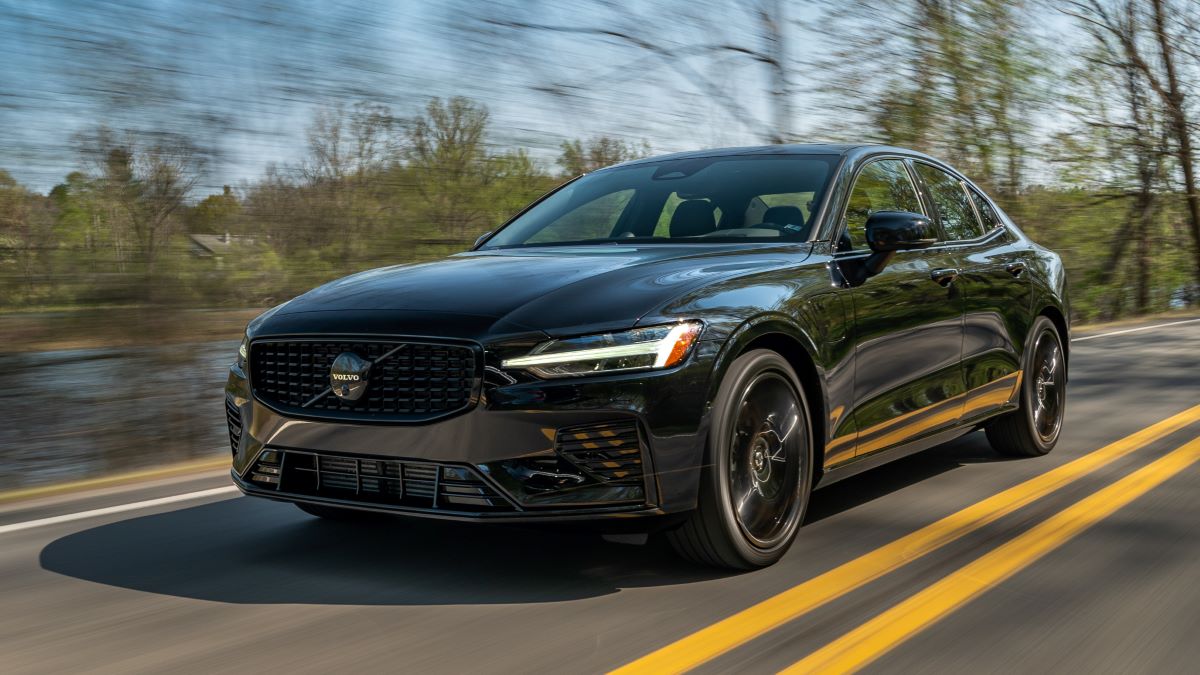
For 2024, Volvo hasn’t made any major changes to the S60, but there are a few updates worth noting. A new Vapour Grey metallic paint has been added to the color options, while the previously available Black Stone has been dropped. The “Dark” exterior styling package now comes standard across the entire lineup.
Front-wheel-drive models equipped with the Climate package now include heated rear seats, while the mid-level Plus trim gains a standard air purifier for enhanced cabin air quality. The top-tier Ultimate trim is now exclusively offered with all-wheel drive. Additionally, Volvo has discontinued the performance-oriented Polestar Engineered plug-in hybrid variant.
The pricing for the 2024 Volvo S60 ranges from $43,645 to $59,745, depending on trim level and options. The lineup includes the Core Dark Theme at $43,645, Plus Dark Theme at $46,595, Plus Black Edition at $48,295, and Ultimate Dark Theme at $51,495.
Among these, the Plus trim offers the best balance of value and features, adding items like adaptive cruise control, a 360-degree camera, and leather upholstery that aren’t available on the Core trim. For those in cold-weather areas, the optional Climate package—which includes a heated steering wheel, heated rear seats, and heated windshield washers—is a smart upgrade.
Under the hood, the standard nonhybrid S60 uses a 247-hp turbocharged four-cylinder engine that can be paired with either front- or all-wheel drive.
The plug-in hybrid Recharge variant significantly ups the performance with 456 hp and standard all-wheel drive. While the S60 is composed and confident on the road, it doesn’t offer the same level of driving engagement or steering feedback as some of its more athletic competitors.
In head-to-head comparisons, it falls short of sportier options like the Alfa Romeo Giulia and BMW 3-series. The 2024 Volvo S60 clearly leans toward luxury and refinement rather than aggressive performance, making it a solid choice for buyers who prioritize comfort, design, and safety.
4. Honda Accord (2013 and Newer)
Improved rust-proofing starting in the 9th generation, with better paint and sealed seams. While not AWD, the Accord has good ground clearance for a sedan and dependable cold-weather starts.
Anti-lock brakes and stability control help in slippery conditions. Despite the trend of many automakers scaling back their sedan lineups or exiting the segment entirely, the Honda Accord continues to be a dominant player in the midsize sedan class.
Unlike competitors such as the Toyota Camry, which has fully embraced a hybrid-only approach, the Accord retains a broader variety of models and powertrains, making it appealing to a wider demographic.
For 2025, the Accord is offered in six distinct trims: LX, SE, Sport Hybrid, EX-L Hybrid, Sport-L Hybrid, and Touring Hybrid. This diverse selection ensures that there’s an Accord for almost every type of buyer. Pricing, which includes destination charges, starts at $29,445 for the LX and reaches $40,450 for the top-tier Touring Hybrid.
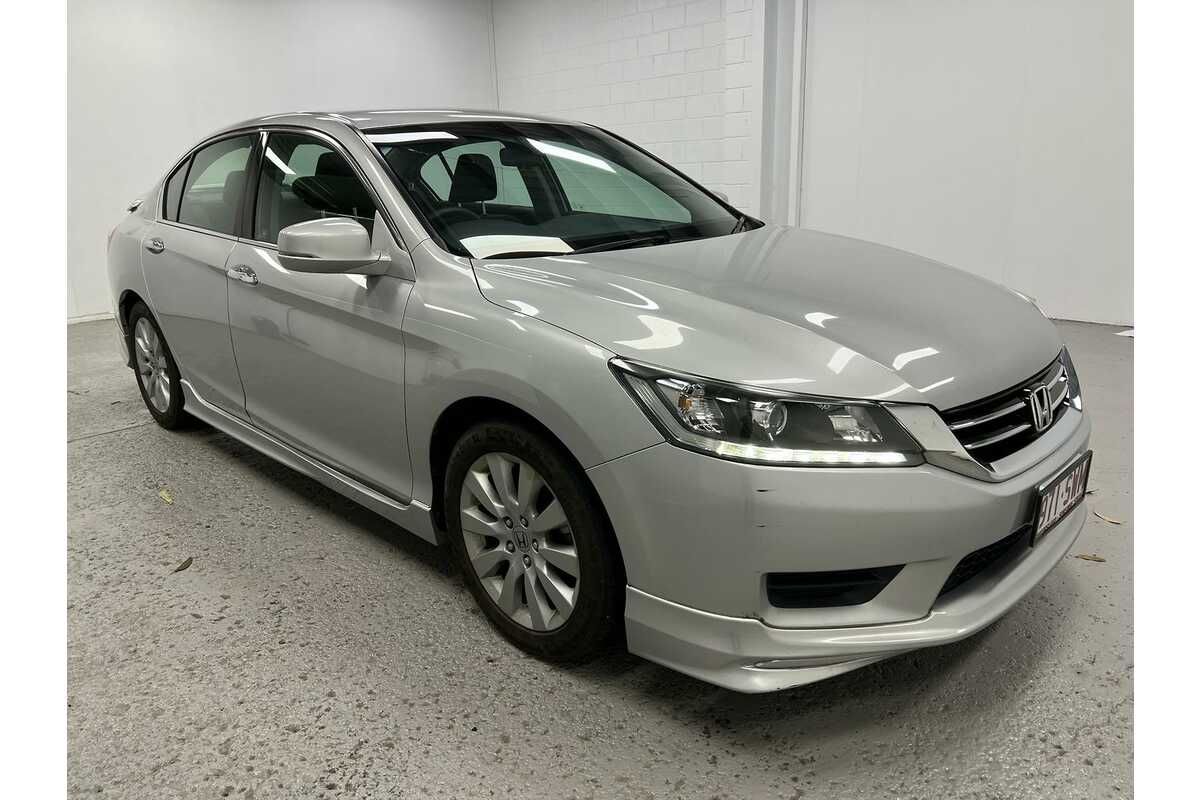
Under the hood, the LX and SE trims come with a 1.5-liter turbocharged four-cylinder engine that delivers 192 horsepower, paired with a continuously variable automatic transmission (CVT) that routes power to the front wheels.
Hybrid trims are also front-wheel drive and utilize a 2.0-liter four-cylinder engine coupled with an electric motor, producing a combined output of 204 horsepower. According to EPA estimates, these hybrid models can return up to 44 mpg combined.
While the Accord does not offer an all-wheel-drive configuration like some of its rivals, it continues to impress with its commendable fuel economy, roomy and comfortable cabin, and surprisingly fun-to-drive nature for a vehicle in this segment.
With its comprehensive lineup and multiple powertrain choices, the 2025 Accord successfully caters to a wide spectrum of buyers—ranging from those seeking a budget-friendly, efficient commuter to drivers looking for more sophisticated features and hybrid performance.
Also Read: 5 Cars Thieves Can’t Crack and 5 That Get Stolen With a Laptop
5. Audi A4 (Quattro Models)
Audi’s galvanized body panels and Quattro all-wheel drive system make the A4 winter-hardened.
Excellent grip and responsive handling in snow, plus top-tier rust resistance for a European car. Heated everything steering wheel, mirrors, and washer nozzles in higher trims.
After more than thirty years, the Audi A4 prepares to take its final bow in 2025—but not entirely. While the A4 nameplate will be retired, its legacy will continue under the new A5 badge, as Audi shifts to a naming convention that assigns even numbers to electric vehicles and odd numbers to its remaining internal combustion models.
In many ways, the A4 exits the stage the same way it entered: as a nimble, understated compact sport sedan that favors subtlety over flash.
Compared to the more aggressive BMW 3-series, the luxurious Mercedes-Benz C-Class, or the bold Alfa Romeo Giulia, the A4 has always occupied a more refined middle ground. That balance remains a key draw for drivers who want a car that’s fun to drive without demanding too much attention.
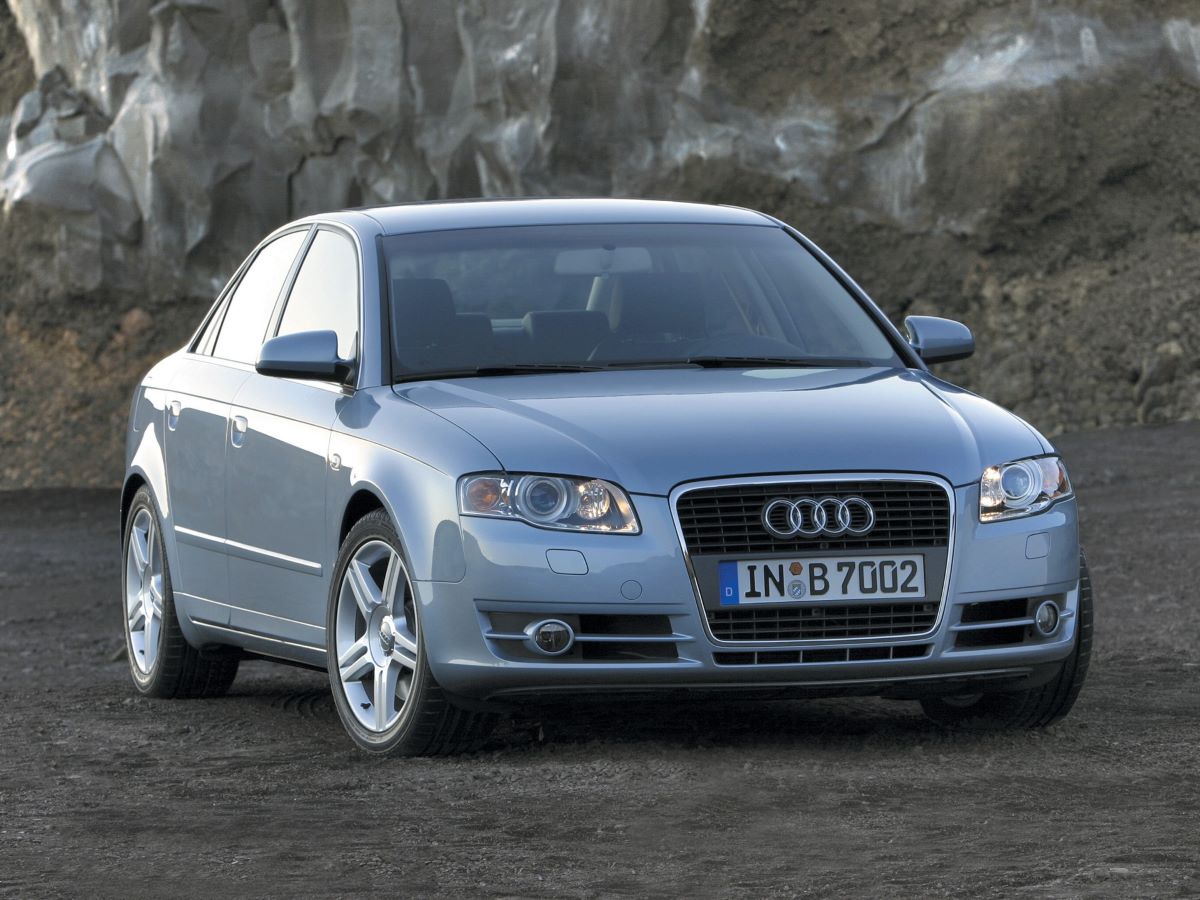
Beyond its driving manners, the A4 offers smart technology and high comfort levels that will resonate with a broad spectrum of buyers. Those with a greater thirst for performance can opt for the sportier S4, while those needing more utility can look to the A4 Allroad wagon for its added versatility.
For 2025, Audi trims the A4 lineup by removing the lower-powered 40 model, leaving the 261-horsepower 45 model as the only option. The changes this year are relatively minor.
All trims now feature remote engine start via the myAudi app. The entry-level Premium trim’s Convenience package adds rear USB charging ports, while the mid-range Premium Plus trim gains standard navigation and moves the Homelink smart home buttons to the rearview mirror.
Aesthetic updates include a black exterior trim treatment, a new 18-inch wheel design, and the addition of the new S Line Plus package for the Premium Plus and Prestige trims. This package brings blacked-out exterior details, dark exhaust tips, 19-inch wheels, red brake calipers, a leather-and-faux-suede interior, carbon fiber trim, and stainless-steel pedal caps.
Pricing for the 2025 Audi A4 starts at $45,395 and tops out at $52,595 depending on trim and options. The three available trims are the Premium 45, Premium Plus 45, and Prestige 45.
Of these, the Premium Plus stands out as the best value, offering a digital instrument cluster, wireless charging, a premium audio system, a surround-view camera, blind-spot monitoring, and lane-keep assist.
Under the hood, the A4 is now offered solely with a 2.0-liter turbocharged four-cylinder engine, producing 261 horsepower and paired with a 12-volt hybrid system. All models come standard with Audi’s Quattro all-wheel drive system and a seven-speed dual-clutch automatic transmission.
While driving purists may wish for a manual option, the A4 still delivers a rewarding experience with precise steering, confident handling, and well-balanced ride quality. The suspension is tuned to walk the line between comfort and sportiness, making it equally adept at soaking up daily commutes and carving through twisty back roads.
At lower speeds and on the highway, the steering feel is subdued, but push the car harder and it becomes surprisingly communicative—revealing the kind of dynamic character that’s made the A4 a lasting presence in the segment.
Sedans That Rust Out Quickly
hether it’s rust along the wheel wells, undercarriage corrosion, or rotting door sills, these sedans have shown they can’t take the punishment that wet, snowy, or coastal environments dish out. If long-term durability and resale value are important to you, these are the vehicles you’ll want to approach with caution—or avoid altogether.
1. Nissan Altima (Pre-2013)
Poor undercoating and cheaply treated wheel wells leave it vulnerable to road salt. Rear quarter panels and rocker panels often show bubbling rust after just a few seasons in cold climates.
Suspension components also corrode prematurely, affecting handling and safety. The midsize family sedan segment has been steadily shrinking in recent years as more consumers shift their preferences toward the versatility and higher seating position of crossover SUVs.
Despite this trend, a few sedans remain in the fight—one of them being the Nissan Altima. The Altima stands out with its attractive styling, reasonable pricing, optional all-wheel drive, and the availability of a turbocharged engine. However, what the Altima lacks is a standout quality that clearly differentiates it from its midsize rivals.
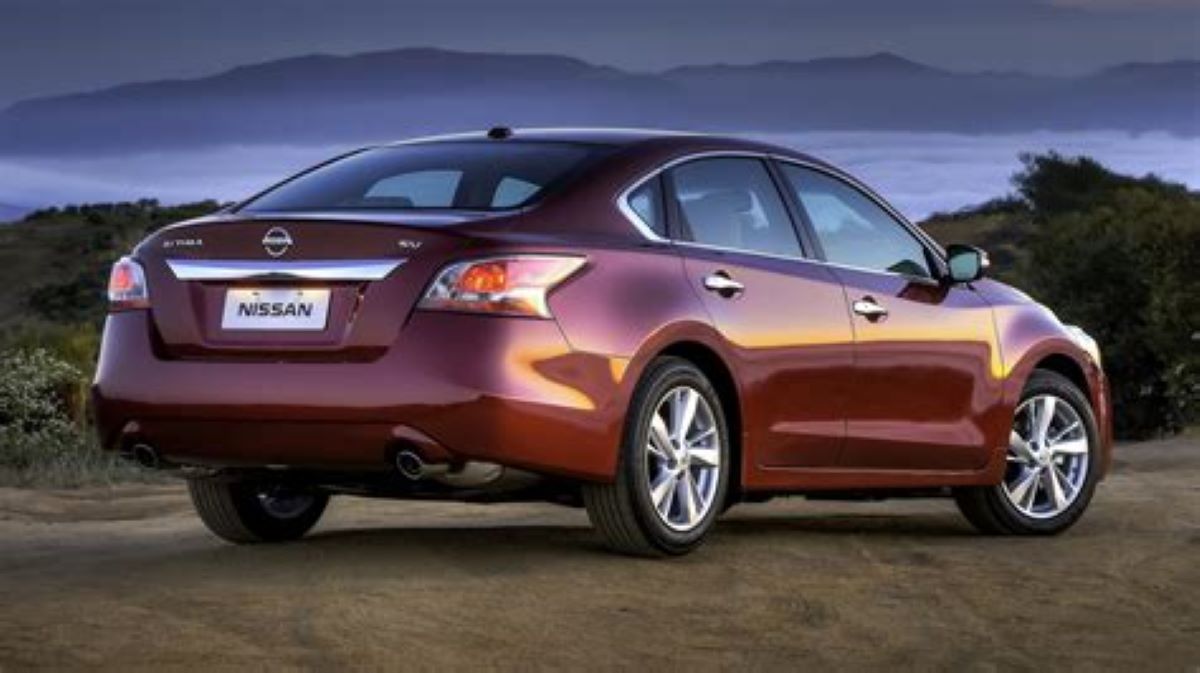
Under the hood, the Altima is offered with two powertrain choices: a standard 188-horsepower four-cylinder engine and an optional turbocharged engine that produces up to 248 horsepower.
This turbocharged engine, known as the VC-Turbo, is notable for its ability to vary its compression ratio on the fly—aiming to deliver either enhanced performance or improved efficiency depending on driving conditions. While the idea is ambitious, execution is less impressive.
Achieving peak power requires 93-octane fuel, and even then, the acceleration doesn’t stand out in a crowded field. On top of that, the VC-Turbo can easily fall short of its EPA-estimated 29 mpg combined rating if you tend to drive with a heavier foot.
2. Chevrolet Malibu (2004–2012)
GM’s cost-cutting during this era shows in its weak rust protection. Frames and subframes are known to rust out, especially in areas where salt brine is used.
Brake and fuel lines often corrode, leading to expensive repairs or early retirement. The current generation of the Chevrolet Malibu has been on the market since 2016, and during that time, it has struggled to firmly establish itself among midsize family sedans.
It’s also the last remaining traditional sedan in a Chevrolet lineup increasingly dominated by SUVs and trucks. Given this context, it’s not surprising that the Malibu is being discontinued after the 2023 model year, with no replacement currently in sight.
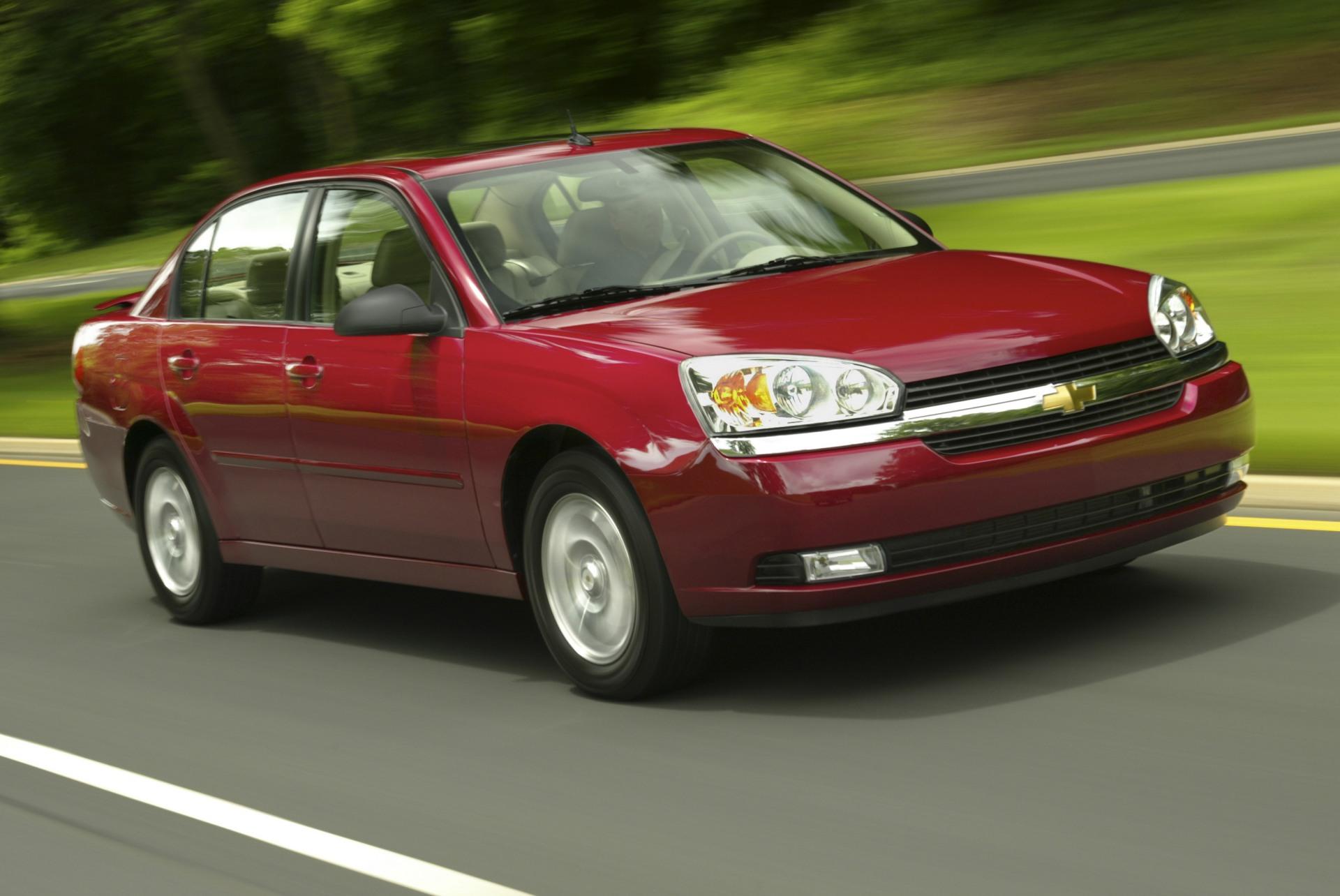
In its final year, the 2023 Malibu lineup sees the departure of the previously available Premier trim and the more powerful 2.0-liter engine that came with it. However, many of the Premier’s features have been integrated into the new 2LT trim. It’s not all bad news, though—every Malibu now comes standard with several advanced driver assistance features.
Despite these updates, the Malibu still carries forward its underwhelming base engine and dated interior, making it hard to recommend over more competitive options.
That said, the Malibu does retain a few strong points: its interior is notably spacious, and the trunk offers ample room for cargo—two characteristics that have long been in its favor. Unfortunately, those assets aren’t enough to keep it relevant in a segment that includes stronger contenders like the Kia K5 and Hyundai Sonata.
More significantly, a new Honda Accord is on the horizon, and it’s poised to raise the bar even further in the midsize sedan class. In comparison, the Malibu’s shortcomings are even harder to overlook as it quietly exits the stage.
3. Hyundai Elantra (Pre-2011)
Earlier models lacked proper underbody sealing and paint durability. The 2010 Hyundai Elantra is one of those cars that feels like a hidden gem. Much like an unassuming, hole-in-the-wall restaurant that surprises you with exceptional food, the Elantra manages to impress despite its low-profile appearance.
For buyers in the market for an economy car, it checks nearly every important box. Priced competitively alongside the Honda Civic, Mazda 3, and Toyota Corolla, the Elantra stands out by offering significantly more passenger space and comfort.
On top of that, it comes with a slightly lower price tag, solid fuel economy, a roomy trunk, and an excellent warranty—making it a compelling value in the compact sedan class.
Hyundai hasn’t made major changes to this generation of the Elantra since its debut in 2007, but there are a few important updates for 2010. A new base-level “Blue” trim has been introduced, featuring improved fuel efficiency thanks to a suite of engine enhancements.
These include a “smart” alternator management system, lower-friction engine components, revised transmission gear ratios, updated engine calibration, and a shift indicator for manual transmission models.
These same improvements have been applied to other Elantra trims equipped with automatic transmissions, resulting in a modest—though meaningful—increase in fuel economy by a mile or two per gallon. It’s a subtle update, but one that helps the Elantra stay competitive with other fuel-efficient small sedans.
Of course, the Elantra isn’t without its flaws, though they’re relatively minor. Some of the interior materials feel cheap, which is not uncommon at this price point, and its side-impact safety ratings are somewhat underwhelming.
It also doesn’t offer much excitement in terms of driving dynamics or styling. However, the trade-off is a level of comfort and overall refinement that you’d typically only expect from more expensive vehicles.
In the end, the 2010 Hyundai Elantra remains one of the best choices in the compact sedan market, even if it often flies under the radar compared to its more widely recognized rivals. In fact, it surpasses the Toyota Corolla in areas where the Corolla once excelled—namely comfort and refinement.
Only the more fuel-efficient Honda Civic and the sportier Mazda 3 stand as serious competition to the Elantra for our top pick. The 2010 Elantra is the kind of car that quietly delivers more than you’d expect—much like that secret little restaurant you almost don’t want to tell anyone about.
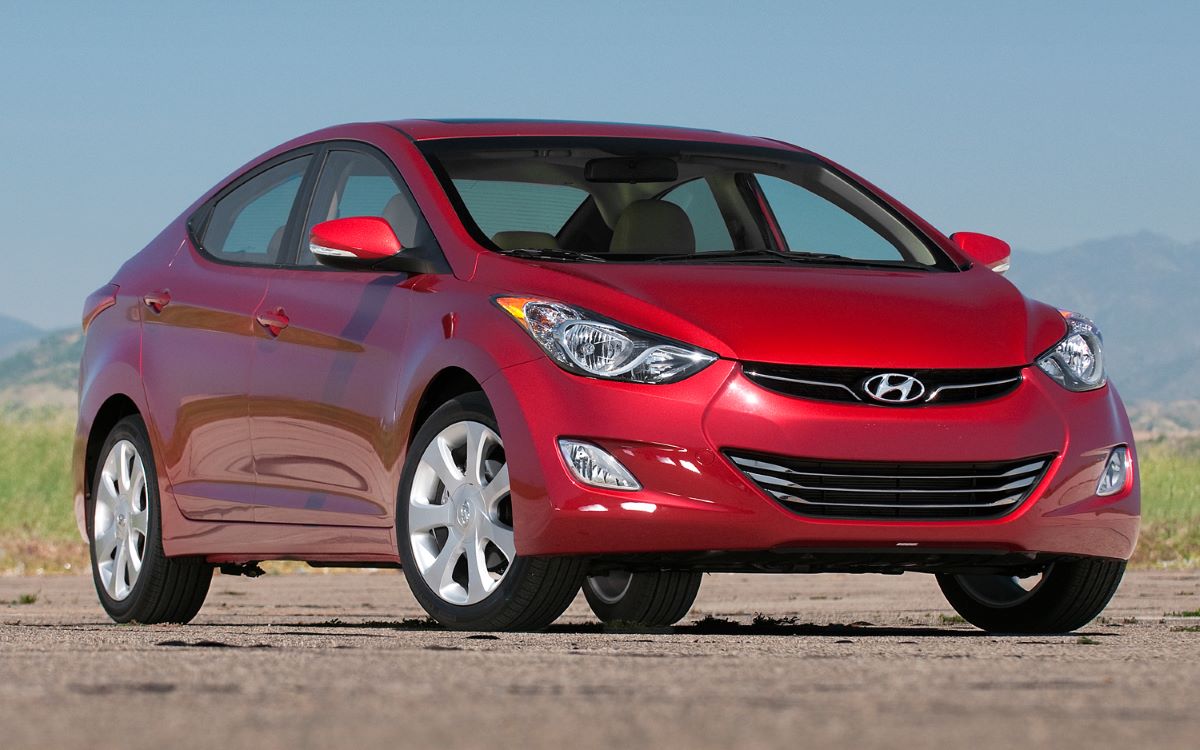
Fenders and wheel arches are among the first to show signs of corrosion, often spreading quickly. Surface rust can become structural in as little as five years in snowbelt regions.
4. Ford Taurus (2000–2007)
Vulnerable rocker panels and trunk seams were rarely protected from moisture and salt. Salt gets trapped under the rear bumper cover, eating away at the body unnoticed until major damage appears.
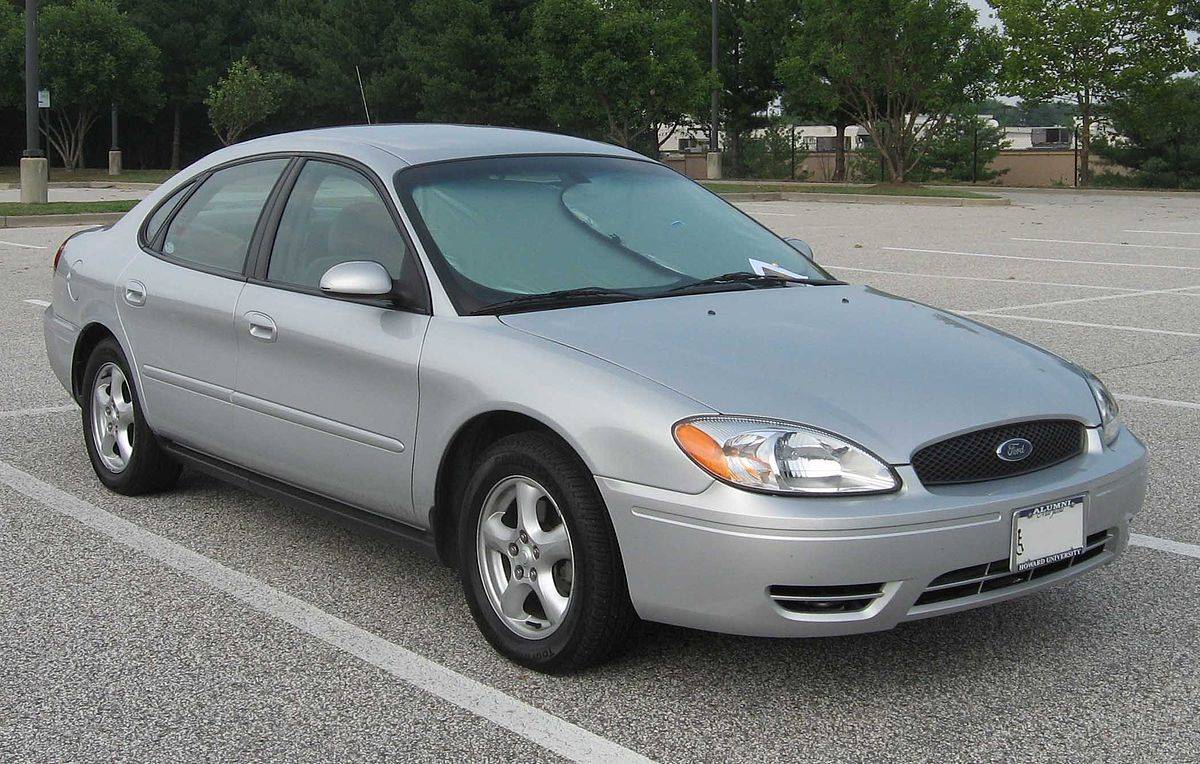
Even daily garage-kept models have seen rear frame rail corrosion.
5. Mazda6 (2003–2008)
One of the most notorious sedans for rust especially around the rear wheel wells and subframes.
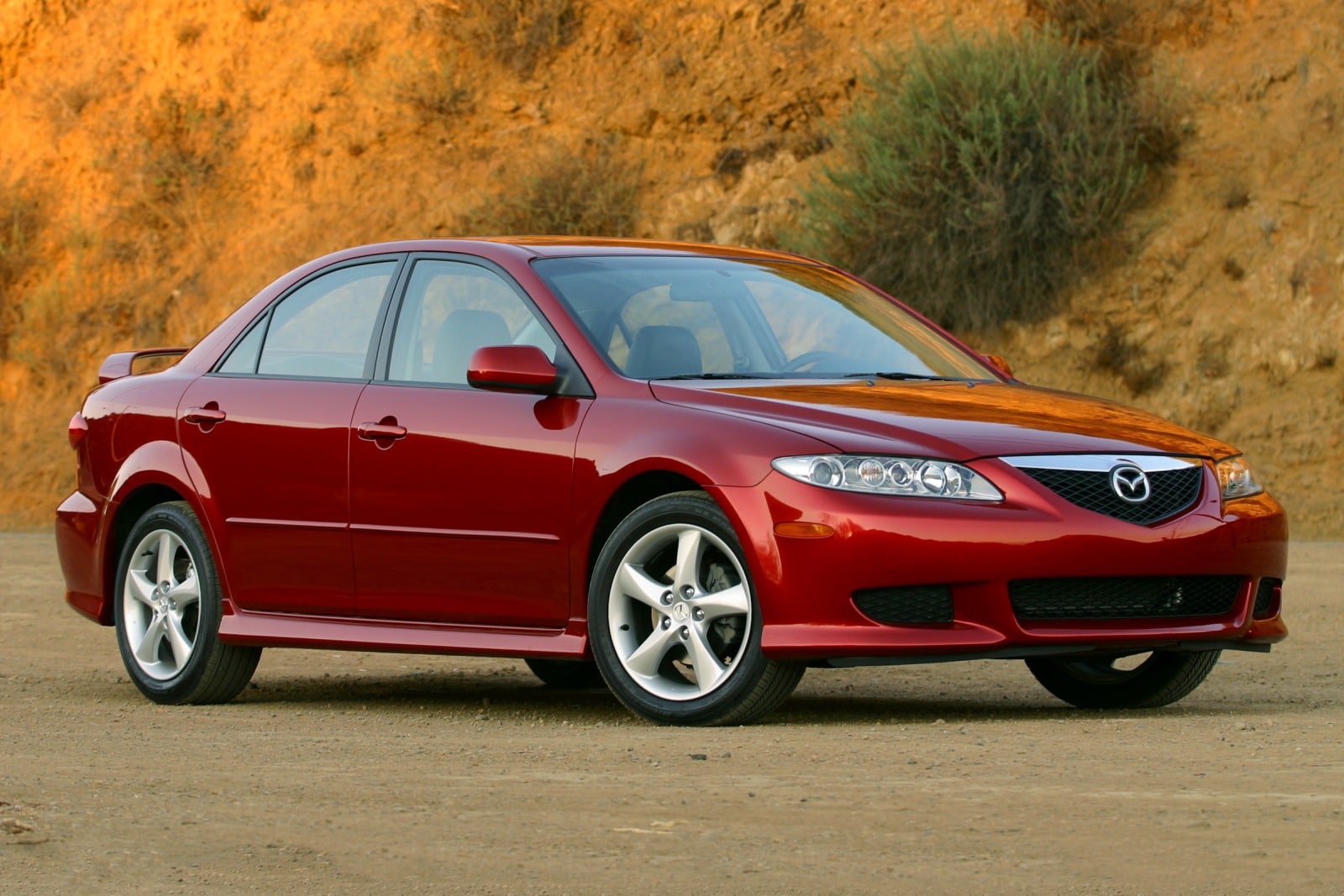
Metal composition and poor paint bonding make the Mazda6 a rust magnet in northern climates. Many owners have reported holes in floorboards and major suspension rust before 100,000 miles.
If you live in a region where winter dominates half the year, your sedan’s long-term survival depends on more than just good tires.
Models like the Subaru Legacy and Volvo S60 are engineered with winter in mind, offering not just capability but also rust resilience.
On the flip side, sedans like the Nissan Altima and Mazda6 might be tempting on the used market, but they can quickly become money pits due to corrosion.
When choosing a sedan for snowy climates, look for rust protection, AWD options, and cold-weather features to ensure it thrives not just survives through every storm.

